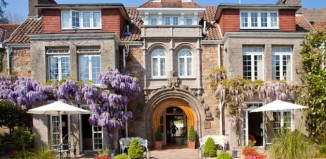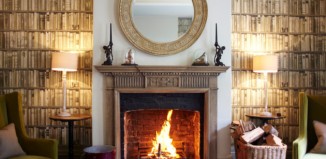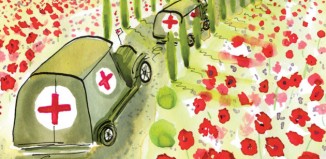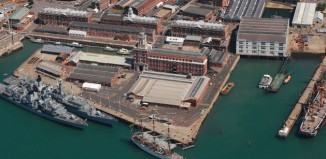Sir Edward Heath’s historic home reopens to the public
The home of former Prime Minister Edward Heath has reopened to the public with its future assured. Arundells in Salisbury, where Sir Edward lived until his death in 2005, contains a unique collection of artefacts reflecting the former Prime Minister’s passion for art and achievements in music, sailing and politics. The house, whose origins date back to the 13th century, is the only residence of a British Prime Minister which remains as it was when he was alive.
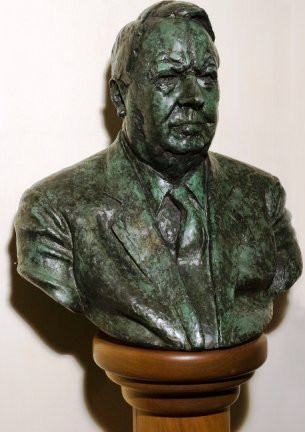
This year visitors will be able, for the first time, to see Sir Edward’s study, where he worked at a desk originally owned by another Prime Minister David Lloyd George, and several of Sir Edward’s Ministerial boxes. In his will, Sir Edward requested that the historichouse in the shadow of Salisbury Cathedral be opened to the public, a duty that is upheld by the Sir Edward Heath Charitable Foundation.
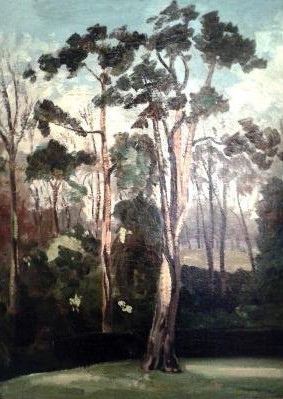
At one point it appeared possible that the house would be sold. This was avoided when Peter Batey, Sir Edward’s former Private Secretary and now a China-based business consultant, stepped in to cover a budget deficit. At the end of 2013 the Trustees secured planning permission for the house to remain open on a permanent basis.
A central feature of the Heath collection is the former Prime Minister’s affection and admiration for Winston Churchill under whom he served as a Government Whip in the 1950s. One of his two Churchill’s paintings has been restored after being damaged during when the IRA bombed Sir Edward’s London flat in the 1970s.
The 18th-century Grade II* listed house, parts of which date back to the 13th century, with a beautiful two-acre medieval walled garden, European and Oriental ceramics, sailing memorabilia and political mementos including:
•A pair of vases from the Qianlong dynasty given toSir Edward by Chairman Mao
•Drawings by Walter Sickert, Augustus and Gwen Johnand paintings by L.S. Lowry, John Singer Sargent, Winston Churchill and John Piper
•Original, signed political cartoons which depict political rivalries from Harold Wilson to Margaret Thatcher, Britain’s entry into the EEC in 1973 and Sir Edward’s 1990 visit to Iraq to negotiate the release of Britons taken hostage as a‘human shield’ by Saddam Hussein
•Ships made from bone and hair by Napoleonic prisoners of war
•Signed photographs of many world leaders from the second half of the 20th century
•Sir Edward’s collection of yachting memorabilia with pictures and models of the five Morning Cloudboats which he owned and raced competitively from 1969 until 1986. A keen yachtsman, Heath won the Admiral’s Cup for Britain in 1971 while he was Prime Minister
•Sir Edward was created a Knight of the Garter in 1992 and the banner of his coat of arms hangs in the house depicting three of his chief interests – a Portcullis (for politics) and a sun emerging frombehind clouds (representing his yacht Morning Cloud) are separated by cascading yellow steps (representing Broadstairs where he was born and raised)
•A bust of Stalin’s granddaughter whose mother Sir Edward knew after she defected from Russia to the West during the Cold War
•Sir Edward’s Steinway piano, which marks his status as Britain’s most musically accomplished Prime Minister. In the 1200s, Arundells was used as a medieval canonry probably by the Archdeacon of Dorset, Henry of Blunston. In the mid-16th century, the house was leased by the Dean and Chapter of Salisbury Cathedral to tenants, notably Richard Mompesson and John Wyndham. The house shows six distinct examples of architectural periods, including black portcullis windows from the 14th century, a Queen Anne façade, a Jacobean wing and a Georgian staircase window. In the early 18th century the current Queen Anne façade was added and subsequently the house was used variously by Godolphin Girls School, a boy’s boarding school and by the Red Cross during the Second World War.
Arundells became dilapidated and the Cathedral Chapter considered demolition before it was saved in 1964 and renovated by Mr and Mrs Robert Hawkings. Sir Edward bought the leasehold in 1985 and the freehold in 1993 when the Cathedral was seeking to raise money for its programme of restoration. The most significant legacy of Sir Edward’s premiership was negotiating Britain’s entry into the EEC, an achievement reflected in several original political cartoons of the period which can be seen at Arundells.
Sir Edward is also fondly remembered by the UgandanAsian community for stepping in to allow British Asians in Uganda to find asylum in the UK after Idi Amin drove them out. His government prepared transit camps for more than 20,000 Asians to help them with their move to Britain, arguing that the country had a moral duty to look after them.
A pair of vases from the Qianlong dynasty, given toSir Edward by Chairman Mao, is evidence of Sir Edward’s interest in China and his role in the West’s strategic opening to China. He visited Mao Zedong in 1974 and 1975 and later established a close relationship with China’s greateconomic reformist leader, Deng Xiaoping. He remained an honoured guest in China with frequent subsequent visits.
Arundells is open for guided tours Saturday to Wednesday until 29 October. Booking is recommended. Admission, house and
garden Gift Aid £10, Standard £9. Garden only £2.50. Wheelchair access ground floor only. Ticket information 01722 326546, info@arundells, www.arundells.org


